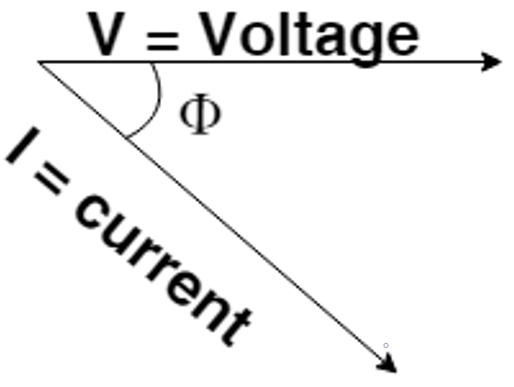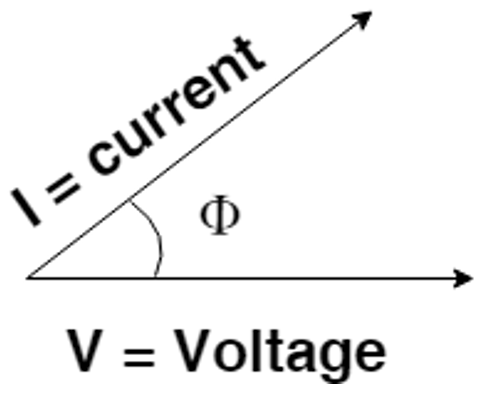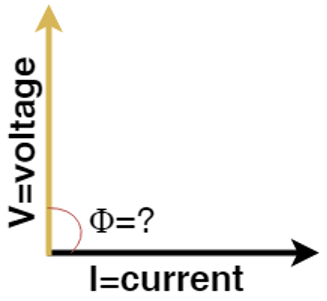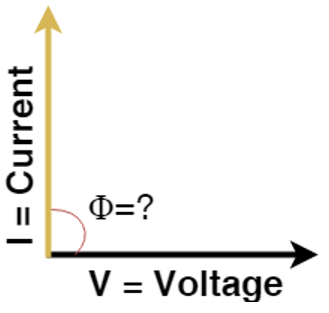This set of FACTS Multiple Choice Questions & Answers (MCQs) focuses on “Power Flow in AC Power System – Set 3”.
1. The electrical energy associated with the power flow in ac power transmission system is represented in ________
a) calorie
b) joules
c) kilowatt
d) kilowatthour
View Answer
Explanation: The electrical energy associated with the power flow in ac power transmission system is represented in kilowatthour, abbreviated as kwh. Electrical energy is the energy associated with the charges of the charged particles, namely electrons and protons of the electrical conductors. The wattmeter measures the amount of electrical power consumed in kilowatts every hour and shows the units of electrical energy consumed in terms of kwh
2. The thermal energy associated with the power flow in ac power transmission system may be represented in ________
a) joule
b) newton
c) second
d) watt
View Answer
Explanation: The thermal energy associated with the power flow in ac power transmission system may be represented in joule. Newton is the unit of force. Second is the unit of time and watt is the unit of power.
3. Which one is larger unit to measure thermal energy – 1calorie or 1joule?
a) both are equal
b) 1calorie is larger than 1joule
c) 1joule is larger than 1calorie
d) cannot be determined
View Answer
Explanation: Thermal energy is manifested due to the inherent temperature of the material conducting energy (electrical or heat). It can be measured in calorie or joule. 1calorie is equal to 4.186 joule. Hence 1calorie is larger than 1joule.
4. In ac power transmission system, 1kwh of electrical energy is equivalent to ________ joule.
a) 1joule
b) 3.6joule
c) 3.6X106joule
d) 3.6X103joule
View Answer
Explanation: Kilowatthour is the standard unit of measurement of electrical energy. Joule is the SI unit of heat energy. Conceptually electrical energy is associated with production or conduction of heat. It follows kwh and joule are interconvertible. 1kwh=3.6X106joule.
5. What will be the power flow equation of the system referring to the following phasor diagram?

a) S=P+jQ
b) S=P
c) S=P-jQ
d) S=P±jQ
View Answer
Explanation: In the phasor diagram, we see that current phasor is lagging the voltage phasor. So, the electrical power system referring to the given phasor diagram is having its reactive power lagging which is denoted by ‘+Q’, i.e. positive reactive power Q as per the customary practice of notations. Thus we get the power flow equation of the given system as S=P+j(+Q) or S=P+jQ.
6. What will be the power flow equation of the system referring to the following phasor diagram?

a) S=P+jQ
b) S=P
c) S=P-jQ
d) S=P±jQ
View Answer
Explanation: In the phasor diagram, we see that current phasor is leading the voltage phasor. So, the electrical power system referring to the given phasor diagram is having its reactive power leading which is denoted by ‘-Q’, i.e. negative reactive power Qas per the customary practice of notations. Thus we get the power flow equation of the given system as S=P+j(-Q) or S=P-jQ.
7.Identify the overall nature of power flow in the electrical transmission system having the following phasor diagram.

a) capacitive
b) inductive
c) resistive
d) capacitive or inductive
View Answer
Explanation: In the phasor diagram, we find the voltage phasor as V∠0 and the current phasor as I∠+Φ as per the customary practice of notations. It indicates that the current is flowing in the system leading by a phase angle Φwith respect to the voltage in the system. This is the characteristic feature of a system having a capacitive element or exhibiting dominance of capacitive element in it. Hence, the overall nature of power flow in the electrical transmission system having the given phasor diagram is capacitive.
8. Identify the overall nature of power flow in the electrical transmission system having the following phasor diagram.

a) capacitive
b) inductive
c) resistive
d) capacitive or inductive
View Answer
Explanation: In the phasor diagram, we find the voltage phasor as V∠0 and the current phasor as I∠-Φ as per the customary practice of notations. It indicates that the current is flowing in the system lagging by a phase angle Φwith respect to the voltage in the system. This is the characteristic feature of a system having a inductive element or exhibiting dominance of inductive element in it. Hence, the overall nature of power flow in the electrical transmission system having the given phasor diagram is inductive.
9. Identify the overall nature of power flow in the electrical transmission system having the following phasor diagram.

a) purely resistive
b) impurely resistive
c) purely capacitive
d) purely inductive
View Answer
Explanation: In the phasor diagram, we find the voltage phasor as reference denoted by V∠0 Also the current phasor is in line with the voltage refence, expressed as I∠0. This is the characteristic feature of a system having a purely resistive element. Alternatively the power system can exhibit dominance of resistive element where inductive current (or lagging reactive power) is equal to capacitive current (or leading reactive power) in it. Hence, the overall nature of power flow in the electrical transmission system having the given phasor diagram is resistive.
10. What is the value of Φin the ac power transmission system with the following figure?

a) unity
b) zero
c) infinity
d) undetermined
View Answer
Explanation: By definition, Φin the following figure indicates the phase angle difference between the voltage phasor and the current phasor. When Φ=0, the voltage and current phasors are in line with each other. This is the inherent or basic property of an ac power transmission system having resistance as the sole effective element.
11. Which of the following is the general convention in ac power flow?
a) Angle obtained by moving clockwise w.r.t the reference is positive
b) Angle obtained by moving anticlockwise w.r.t the reference is positive
c) Angle obtained by moving clockwise from current phasor is positive
d) Angle obtained by moving clockwise from voltage phasor is positive
View Answer
Explanation: It is the general convention to refer to the angle obtained by any phasor with respect to the reference by moving in clockwise direction from it, is considered as negative. Conversely the angle obtained by any phasor with respect to the reference by moving in anticlockwise direction from it, is measured as positive. This general convention is followed by current, voltage, power and other phasors; unless specified otherwise.
12. Match the following.
| Elements of electrical system | Characteristics |
|---|---|
| 1] Ideal Capacitive element [Φ=900] | A]  |
| 2] Ideal Inductive element [Φ=900] | B]  |
| 3] Ideal Inductive element [Φ=00] | C]  |
| 4] Ideal Capacitive element [Φ=00] | D]  |
a) 2-A, 3-A
b) 1-C, 4-C
c) 2-A, 1-B
d) 3-D, 4-D
View Answer
Explanation:
| Elements of electrical system | Characteristics |
|---|---|
| 2] Ideal Inductive element [Φ=900] | A]  |
| 1] Ideal Capacitive element [Φ=900] | B]  |
| 3] Ideal Inductive element [Φ=00] : Conceptually wrong | In inductive element [Φ≠00] |
| 4] Ideal Capacitive element [Φ=00] : Conceptually wrong | In capacitive element [Φ≠00] |
13. What is the active power transferred between two sources?

a) P = \(\frac{\textit{V}1*\textit{V}2}{X}\)sin δ
b) P = \(\frac{\textit{V}1*\textit{V}2}{X}\)cos δ
c) P = \(\frac{\textit{V}1*\textit{V}2}{X}\)tan δ
d) P = \(\frac{\textit{V}1*\textit{V}2}{X}\)cot δ
View Answer
Explanation: As the given figure shows two sources, one being deficient in power is receiving power from the relatively surplus one. These sources are connected through a transmission line with its resistance negligible in comparison with its reactance X. In such condition, the active power transferred between these two sources is given by P = \(\frac{\textit{V}1*\textit{V}2}{X}\)sin δ.
14. What is the significance of the symbol ‘δ’ in the figure?

a) load angle
b) voltage angle
c) current angle
d) power factor
View Answer
Explanation: As the given figure shows two sources are connected through a transmission line with its reactance X. It also depicts the receiving end voltage V2∠0 as the reference voltage phasor with the sending end voltage V∠δ. Here the magnitudes of the receiving end and sending end voltages are considered equal but with the difference in phase by ∠δ. This angle δ is known as the load angle.
15. For balance operation of a three phase system, which of the condition is necessary?
a) Mutual inductance between the phases
b) Network parameters are in different sequences
c) Most of the phases are coupled with each other
d) Neutrals are at the same potential
View Answer
Explanation: For balance operation of a three phase system the neutrals should be at the same potential with no presence of mutual inductance between any two phases. These conditions lead to the conclusion that all the phases should necessarily be at the decoupled state with each other. Definitely the sequence of the phases should match with that of the source.
Sanfoundry Global Education & Learning Series – Flexible AC Transmission System (FACTS).
To practice all areas of Flexible AC Transmission System (FACTS), here is complete set of 1000+ Multiple Choice Questions and Answers.
If you find a mistake in question / option / answer, kindly take a screenshot and email to [email protected]
